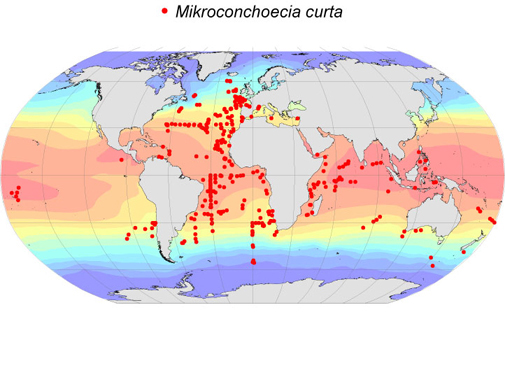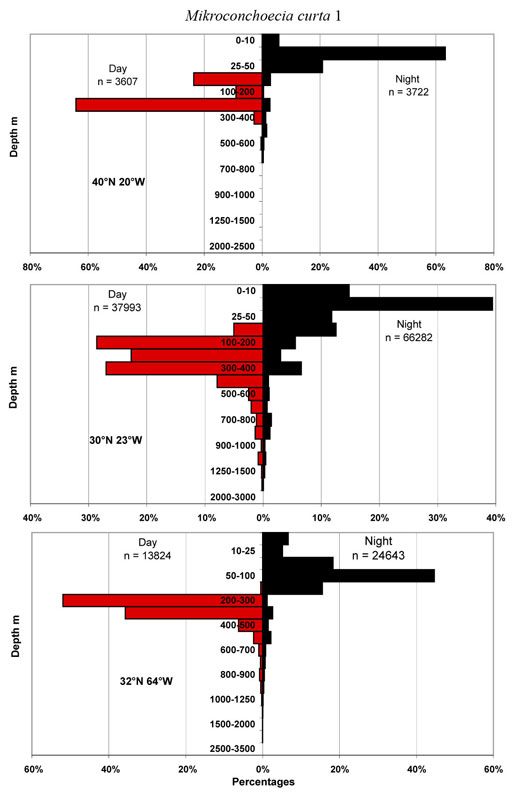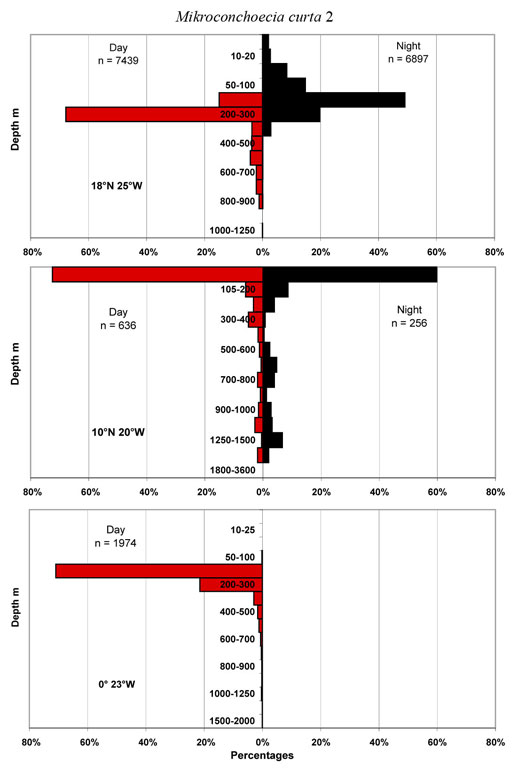Notes
670 records
This was one of the earliest halocyprid species to be described, probably because at middle latitudes it frequently swarms in the near surface waters at night. Its sexual dimorphism lead Lubbock into mistakenly naming the males and females as separate species – males he named as Conchoecia curta, and the females as Halocypris rostrata. Sars (1887) re-named the species Halocypris clausii, and Claus (1890, 1891) placed it in a new genus Mikroconchoecia. Müller (1894) initially used the name Conchoecia clausii but later (1906) reverted to Lubbock’s specific epithet, while rejecting all of Claus’s genera, and lumping the majority of halocyprids into a single supergenus Conchoecia. However, Muller still retained a separation of this and the three new Mikroconchoecia species he described, by classifying them in his ‘curta group’. Poulsen (1973) resurrected Claus’s genus but adopted the wrong spelling of Microconchoecia, perpetuating Müller’s (1906) mistake in his listing of synonyms. Kempf (1986) pointed out the correct spelling. This small, globose and highly ornamented species ranges from 60°N to 57°S. At latitudes >40° its occurrences appear to be seasonal, mostly in summer and autumn. However, this may be a sampling artefact as the early juvenile instars are both too small to be sampled by most of the nets used and morphological unrecognisable. Its absence from the North Pacific is notable. The bathymetric profiles show that it is very abundant at latitudes of 10-30° at depths of 50-400m by day. A large proportion of the population migrates up above the thermocline at night, and at times large numbers enter the neuston (Moguilevsky and Angel, 1975). Females regularly occur in small, but appreciable, numbers at depths extending down to 1500m. Such deep distributional tails are unlikely to be the result of contamination, because juveniles and males do not have similar distributional tails although they are equally likely to be contaminants. This species is very similar in appearance to the slightly smaller species echinulata, and almost certainly the two species have often been confused. Live specimens are translucent and tinged with orange and yellow pigments below the incisure and around the bases of the limbs.
| Equator
|
N
|
Mean mm
|
s.d.
|
Range mm
|
|---|
| Female
|
68
|
0.83
|
0.031
|
0.78-0.90
|
|---|
| Male
|
110
|
0.83
|
0.032
|
0.76-0.90
|
|---|
| A-1
|
269
|
0.60
|
0.025
|
0.54-0.66
|
|---|
| A-2
|
149
|
0.44
|
0.017
|
0.40-0.48
|
|---|
| A-3
|
|
|
|
|
|---|
| Bermuda
|
N
|
Mean mm
|
s.d.
|
Range mm
|
|---|
| Female
|
215
|
0.81
|
0.042
|
0.72-0.94
|
|---|
| Male
|
215
|
0.76
|
0.041
|
0.66-0.90
|
|---|
| A-1
|
217
|
0.58
|
0.031
|
0.52-0.68
|
|---|
| A-2
|
|
|
|
|
|---|
| 44°N
|
N
|
Mean mm
|
s.d.
|
Range mm
|
|---|
| Female
|
24
|
0.81
|
0.026
|
0.76-0.86
|
|---|
| Male
|
20
|
0.84
|
0.019
|
0.80-0.86
|
|---|
| A-1
|
|
|
|
|
|---|






